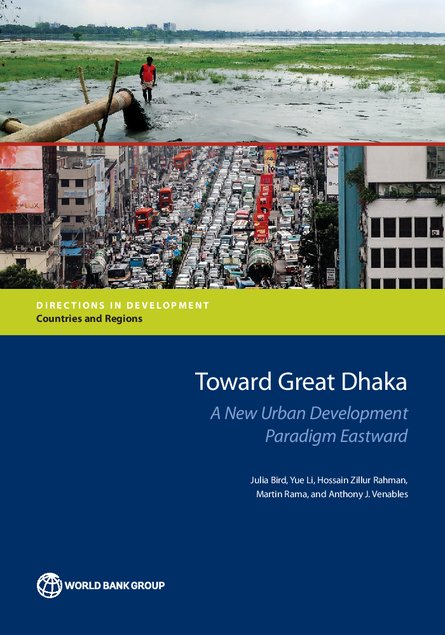
A unique strategic opportunity beckons Bangladesh. Dhaka, the economic powerhouse of the country, stands on the cusp of a dramatic transformation that could make it much more prosperous and livable. Today, Dhaka is prone to flooding, congestion, and messiness, to a point that is clogging its growth. But toward its east, where two major highway corridors will one day intersect, is a vast expanse of largely rural land. And much of it is within 6 kilometers of the most valuable parts of the city. The time to make the most of this eastward opportunity is now. Many parts of East Dhaka are already being developed in a haphazard way at an alarmingly rapid pace. Private developers are buying land and filling it with sand so they can build and sell new houses and apartments. Canals and ponds are disappearing, and the few narrow roads crossing the area are being encroached by construction. This spontaneous development could soon make East Dhaka look like the messy western part of the city, and retrofitting it later will be more difficult and costlier than properly planning and developing it now. Toward Great Dhaka: A New Urban Development Paradigm Eastward seeks to analyze how the opportunity of East Dhaka could be realized. Using state-of-the-art modeling techniques, the study simulates population, housing, economic activity, and commuting times across the 266 unions that constitute Greater Dhaka. It does so under various scenarios for the development of East Dhaka, but always assessing the implications for the entire city. The simulations suggest that pursuing a strategic approach to the development of East Dhaka would make Greater Dhaka a much more productive and livable city than continuing with business as usual. Based on current trends, Greater Dhaka would have a population of 25 million in 2035 and an income per capita of US$8,000 at 2015 prices. However, embracing a strategic approach would add 5 million people to the city. And, it would be a more productive city, with nearly 1.8 million more jobs and an income per capita of more than US$9,200 at 2015 prices, enough to put Dhaka on the map of global cities.
Links
Resource collections
- UN Habitat - Urban Response Collection
- Urban Response - Urban Crisis Preparedness and Risk Reduction
- Urban Response Collection - Community Engagement and Social Cohesion
- Urban Response Collection - Economic Recovery
- Urban Response Collection - Environment and Climate Change
- Urban Response Collection - Housing, Land and Property
- Urban Response Collection - Urban Crisis Response, Recovery and Reconstruction
- Urban Response Collection - Urban Resilience